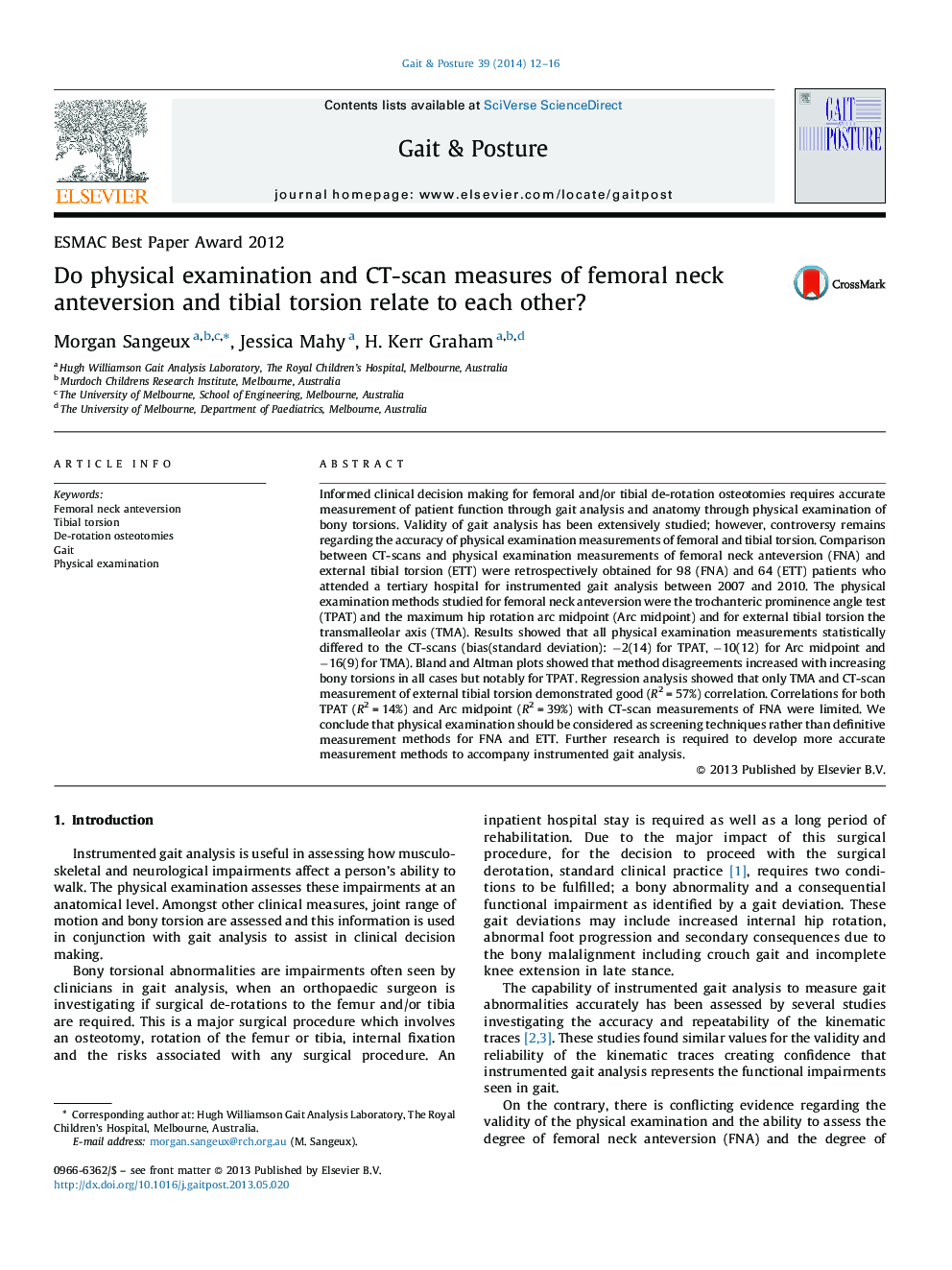| کد مقاله | کد نشریه | سال انتشار | مقاله انگلیسی | نسخه تمام متن |
|---|---|---|---|---|
| 6206888 | 1265653 | 2014 | 5 صفحه PDF | دانلود رایگان |

Informed clinical decision making for femoral and/or tibial de-rotation osteotomies requires accurate measurement of patient function through gait analysis and anatomy through physical examination of bony torsions. Validity of gait analysis has been extensively studied; however, controversy remains regarding the accuracy of physical examination measurements of femoral and tibial torsion. Comparison between CT-scans and physical examination measurements of femoral neck anteversion (FNA) and external tibial torsion (ETT) were retrospectively obtained for 98 (FNA) and 64 (ETT) patients who attended a tertiary hospital for instrumented gait analysis between 2007 and 2010. The physical examination methods studied for femoral neck anteversion were the trochanteric prominence angle test (TPAT) and the maximum hip rotation arc midpoint (Arc midpoint) and for external tibial torsion the transmalleolar axis (TMA). Results showed that all physical examination measurements statistically differed to the CT-scans (bias(standard deviation): â2(14) for TPAT, â10(12) for Arc midpoint and â16(9) for TMA). Bland and Altman plots showed that method disagreements increased with increasing bony torsions in all cases but notably for TPAT. Regression analysis showed that only TMA and CT-scan measurement of external tibial torsion demonstrated good (R2Â =Â 57%) correlation. Correlations for both TPAT (R2Â =Â 14%) and Arc midpoint (R2Â =Â 39%) with CT-scan measurements of FNA were limited. We conclude that physical examination should be considered as screening techniques rather than definitive measurement methods for FNA and ETT. Further research is required to develop more accurate measurement methods to accompany instrumented gait analysis.
Journal: Gait & Posture - Volume 39, Issue 1, January 2014, Pages 12-16